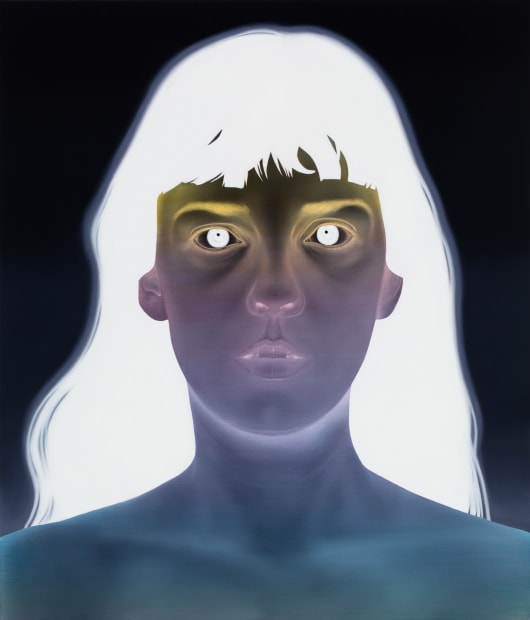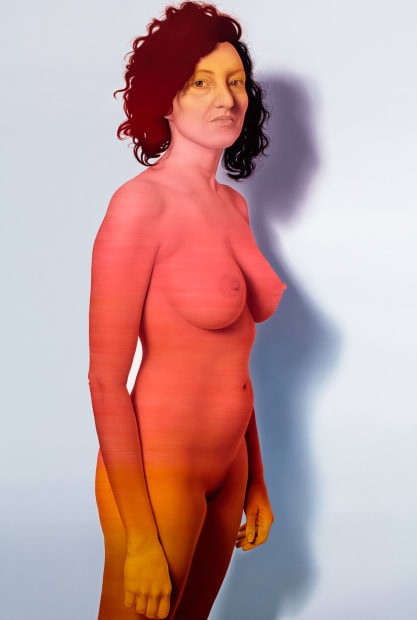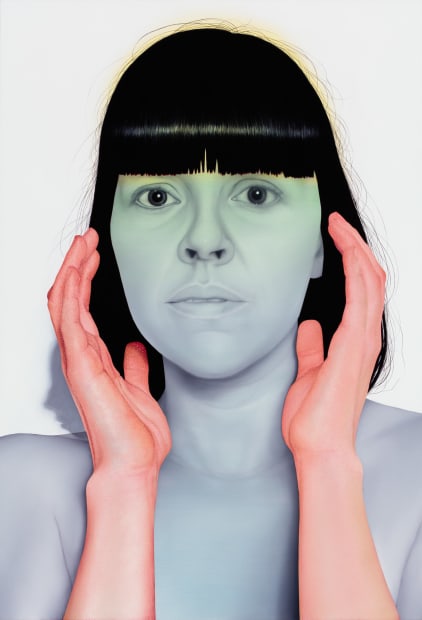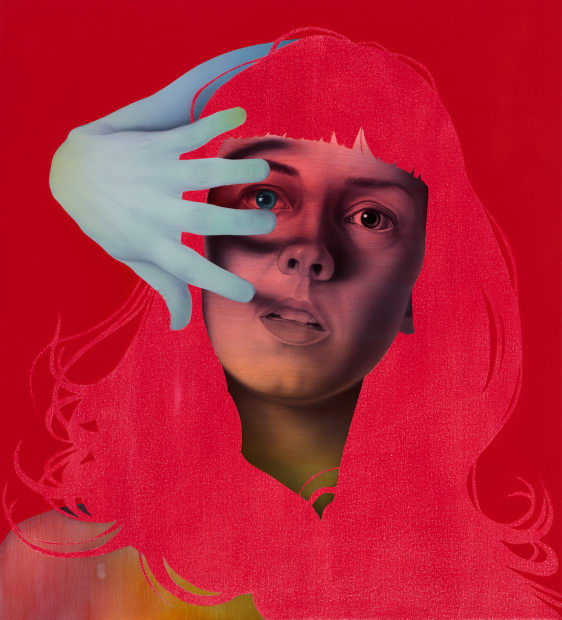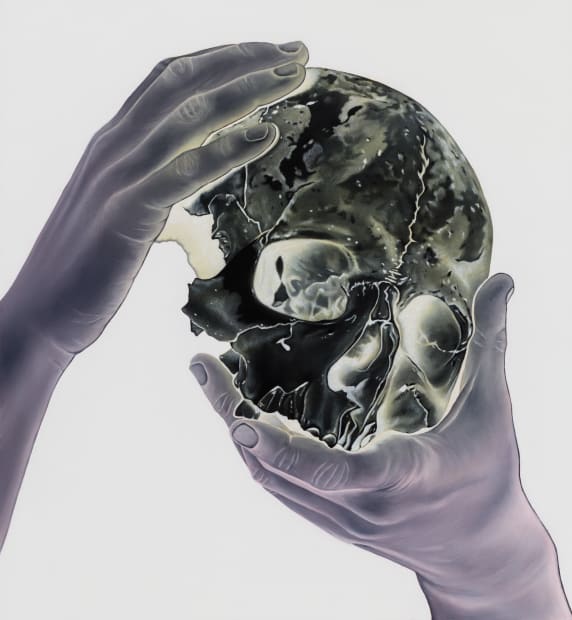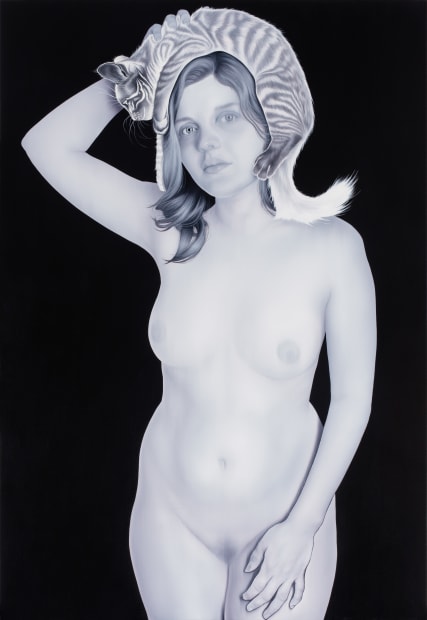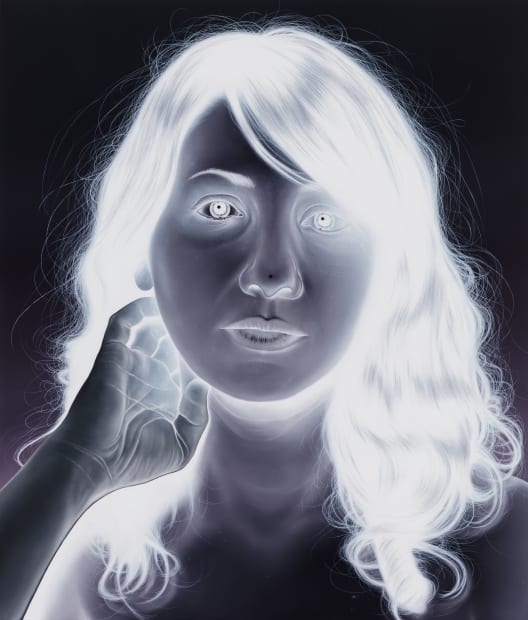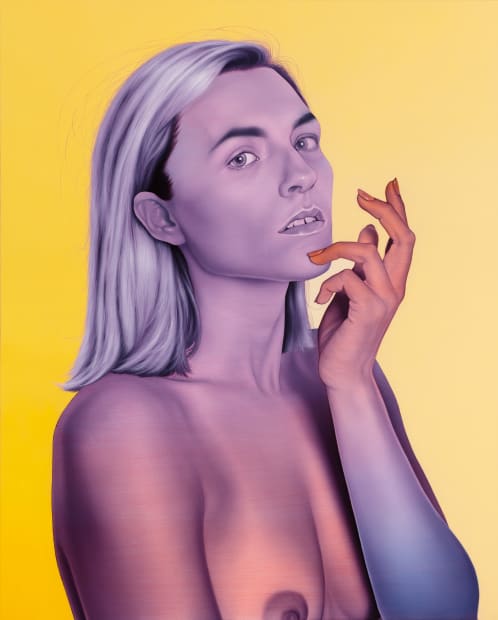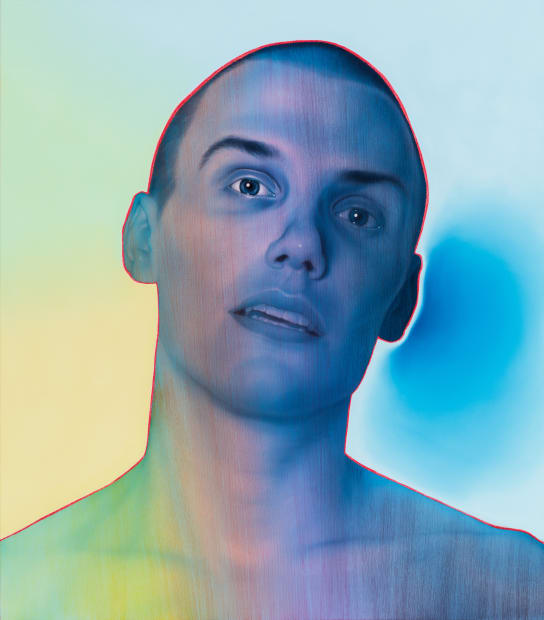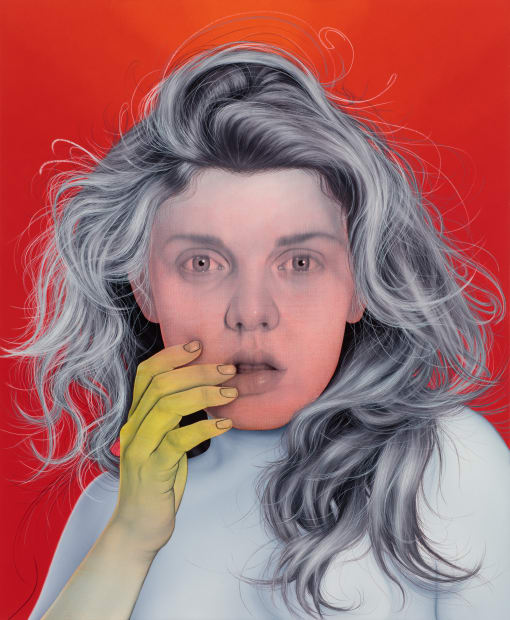JENNY MORGAN: TURNING THE TIDE
To confront a person with his shadow is to show him his own light. Once one has experienced a few times what it is like to stand judgingly between the opposites, one begins to understand what is meant by ‘the self’. – Carl Jung
BEERS is thrilled to present Turning the Tide, the first UK solo exhibition by American artist Jenny Morgan. For this body of work, Morgan invites viewers to journey with her to the proverbial dark side of the moon…and back. And not unlike like Pink Floyd’s psychedelic journey through psychological states, Morgan’s body of work similarly references lunar patterns. Just as the moon controls the tides, each of the 11 paintings included here concerns itself with the duality of the human psyche.
Throughout, works with saturated colour spectrums are paired with muted grey tones, a contrast that Morgan believes exists as a visual metaphor for polarities of human consciousness. Yet, despite how liberal her manipulation of colour appears, her chosen palette is strikingly limited; for Morgan, such restraint allows for a deeper understanding of the individual depicted combined with a fuller exploration into (the layers of) the subject matter.
Those who follow Morgan’s work will recognize a host of familiar faces, even cheekily alluded to with David’s Return and her most recognisable subject in Crescent. Her recurrent usage of loved ones (and her own self-portrait) as her subject matter provides her the opportunity to intimately investigate her own relationships with these individuals and with herself. For the viewer, however, the relationship with the subject in each painting acts almost like a mirror – these are paintings that are confident and pained, direct yet mysterious. However it is a long-accepted notion most-famously worded by Oscar Willde that suggests the portrait painter’s work seems to just say as much – or more – about the painter and her own processes than the sitter. But they ask us to consider ourselves, as well. They address us – each looking into our eyes as we gaze into theirs. Perhaps through Morgan’s work, we become aware of how notions of ‘the self’ exist as a paradox of opposites: light and dark, good and evil, confident and vulnerable… allegories relating to highs and lows of the tides, lunar eclipses, day and night. For Morgan, this notion of ‘turning the tide’ refers to “the act of reversing the direction of energy and thought by transforming the darkness to light, and inversely, turning lightness to dark and revealing the psychological shadow.”
For viewers, the resulting works come across as stark, unnerving, and dramatic. Most of these portraits engage directly with the viewer, but seem somehow guarded, or removed, as though simultaneously inviting – and warning – of this psychological journey. Are these women – often appearing unforgivingly nude – confident and defiant, or are they wounded and reticent? Certainly Shapeshifter inhabits this duality: both seductive and guarded. Never Going Back is suggestively titled as well, perhaps in reference to domestic abuse or female emancipation, or one might assume, both.
Two of the portraits operate on an inverted colour-scheme; challenging the viewer with an uncanny image of the portrait, somehow both digital and post-digital, these works reach out to a generation of hyperractive visual stimuli by offering both an answer and a new question. Asking us to trade places, if only for a moment, to venture into the obscurity of the subconscious…where only there we might find light.
JENNY MORGAN
Jenny Morgan is one of the most recognisable young artists painting the figurative form today. Her work intertwines figurative realism with graphic forms, demonstrating exceptional technique paired with a subtle and confident use of abstraction. Reverberating with an almost religious aura, Morgan’s work suggests psychedelic flashes or perhaps figures in transformative, or transcendent processes. As Morgan explains, the work ‘manipulates the figure to expose the individual’s idiosyncrasies and create a physiological portrait’. In fact, Morgan seems to do away with any extraneous information, focusing the painting on the specific psychological state of the sitter, presenting their personalities as she herself experiences them. In short, these vivid portraits are grand metaphorical insights into into the personality of the individual represented.
JENNY MORGAN (b. 1982, Salt Lake City, UT) holds a BA from the Rocky Mountain College School of Design in Lakewood, Colorado and an MFA from the School of Visual Arts in New York, NY. Morgan’s work has received critical attention in numerous publications including Whitewall, Hi-Fructose, The Village Voice, and The Denver Post, the highlight being her cover feature in Juxtapoz in May 2015. Her 2013 solo exhibition How To Find A Ghost was named one of the top 100 fall shows worldwide by Modern Painters in 2013. Additionally, Morgan has realized several portraiture commissions for publications including The New York Times Magazine and New York Magazine. She has had solo exhibitions in New York, Colorado, Utah and Indiana and has been in numerous group exhibitions including the Smithsonian National Portrait Gallery, Washington, D.C. and the 92Y Tribeca, New York. Her work is represented in the collections of the Museum of Contemporary Art Jacksonville, Purdue University Art Gallery, University of Maryland’s Stamp Student Union Art Collection, as well as major private collections throughout the world. She currently lives and works in Brooklyn, New York. Morgan’s first solo exhibition with Beers will take place in March 2016.
